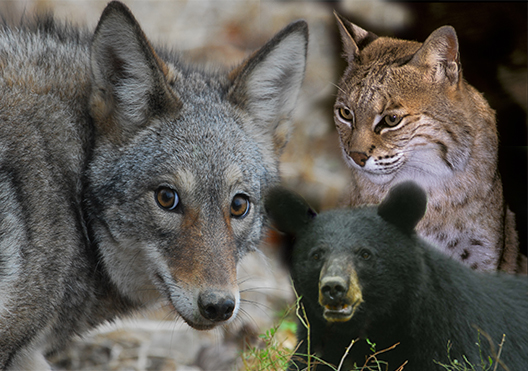Why another fawn survival study and what will we learn? A good question.
Back in 2000 and 2001, we found fawn survival was lower in the Big Woods and coyotes and bears were tied as top predators. About 50% survived to the hunting season. Has that changed? Some people would like to know.
What am I looking forward to with this study? Almost 15 years after the first fawn study the technology is now available that will allow us to discover new things about deer.
First, we will fit adult females with the same GPS radio-collars we are already using – but with an added feature. A special transmitter will tell us when she gives birth and where the birthing bed is located. Basically, we will get an email when the fawn (or fawns) arrive into the world! We’ll share more details about this technology during the upcoming deer trapping season (to begin in mid-January).
The plan is to find the birth site and the fawns. What is the habitat around the birth site? How far and how fast do fawns move from the birth site? How do these factors influence survival? We couldn’t even think of asking those questions 15 years ago.
Second, when we find a fawn it will be fitted with a radio-collar and this fawn collar will communicate with the female’s GPS radio-collar. Whenever the mother is within 30 meters of the fawn it will let us know. That means we can study mother-fawn interactions. How much time do mothers spend with the fawn and how does that change over time? If the fawn dies what does the mother do? And maybe we’ll find out exactly at what age fawns start traveling with the mother.
Fifteen years ago we could only ‘collar and foller’ fawns. Now we hope to follow both the mother and the fawn. Do fawns from more experienced does survive better? Lots of questions to start thinking about asking…
We’ll be sharing some of those answers here.
-Duane Diefenbach
Want to Learn More?
Here is a link to the findings from the original fawn study (or go to Publications to download the full version) conducted in 2000 and 2001.
When should fawn predation trigger management changes? We developed a decision chart for how the PGC can use biological data to determine how to adjust harvest regulations if fewer fawns recruit into the population.
And are coyotes really causing a population decline in deer? We reviewed fawn and doe survival and reproductive rates across eastern North America. Our results indicate increased fawn mortality from coyotes can be addressed through reduced harvest of adult female deer – but only rarely would doe season have to be closed.
How will coyote population reduction efforts increase fawn survival? In South Carolina fawn survival rates were as low as 25%. Coyote removal and habitat management was not effective in recruiting more fawns into the population.
If you would like to receive email alerts of new blog posts, subscribe here.
And Follow us on Twitter @WTDresearch
